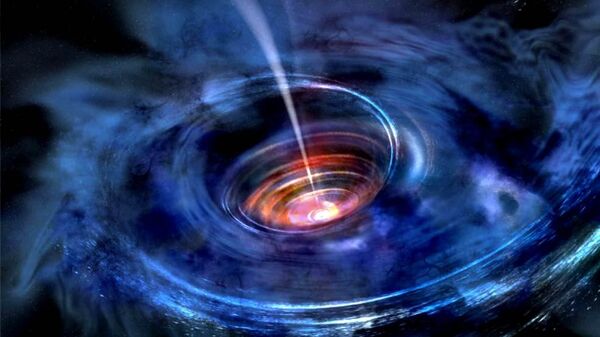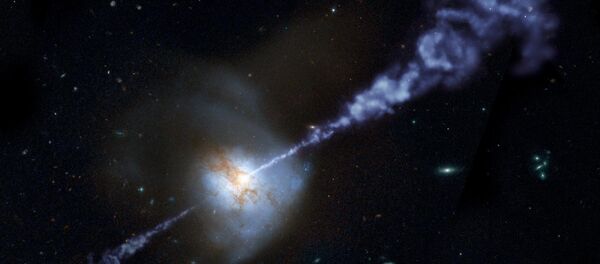Typically, scientists are only able to find black holes in space when there's a planet or a star orbiting them. Black holes give off no electromagnetic radiation, of which all visible light consists — so black holes floating through space with no orbiting objects are considered next to impossible to find.
So imagine the surprise researchers with Keio University in Japan felt when they were studying molecular clouds surrounding a supernova remnant 10,000 light-years from Earth, and they discovered a black hole drifting through space, tethered to no orbiting objects.
The supernova remnant was SNR W44 in the Aquila Constellation. In December 2016, the Keio team was using the ASTE Telescope in Chile and the 45-m Radio Telescope at Nobeyama Radio Observatory to investigate the remnant to determine how much energy had transferred from it to the molecular cloud.
Part of the cloud was a highly compact, fast-moving section that the researchers nicknamed "The Bullet." This cloud, about two light-years across, was rocketing through the cloud at speeds in excess of 220,000 mph. The team wasn't sure why the cloud was moving so quickly, but something must have accelerated it to move that quickly.
"Most of the Bullet has an expanding motion with a speed of 50 km/s, but the tip of the Bullet has a speed of 120 km/s," said Keio graduate student and study contributor Masaya Yamada in a statement. "Its kinetic energy is a few tens of times larger than that injected by the W44 supernova. It seems impossible to generate such an energetic cloud under ordinary environments."
There are two likely scenarios for what caused "The Bullet" to form. The first, the "explosion model", is that the enormous shell of gas expanding away from the supernova passed by a black hole, which sucked in some of the gas. As the gas was pulled in, it spaghettified and rubbed together, cause an enormous explosion that sent it firing out of the black hole's orbit and creating a dense, high-speed particle object.
The second, the "irruption model," is basically the opposite of the first. A black hole, moving through space at high speed, flew through a cloud of dense gas. Upon exiting, it yanked some of the gas behind it, forming a tail in the process. "The Bullet" is that tail.
Both of these theories are viable, and both involve a black hole: the central question is the size of the hole. The "explosion model" would require a fairly small black hole while the "irruption model" would require a larger one. Current data does not allow the Keio team to determine one to be more or less likely than the other.




